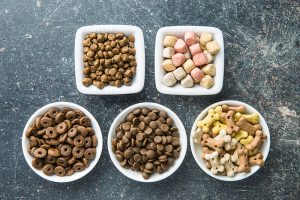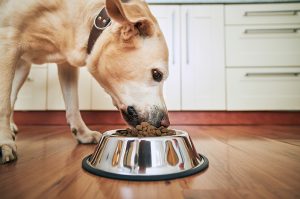What is the Best Dog Food for My Dog?

Across the country, restrictions and stay-at-home orders, like those in the Houston area, placed to limit the spread of Coronavirus can make it harder to get through the day. Whether you’re feeling the toll of isolation or facing functional obstacles. Throughout all of this, your dog is probably proving to be an even better friend than before. While you might have a hard time visiting dog food stores or aisles, your dog still deserves to eat well. After all, the American Veterinary Medical Association lists “appropriate food” fourth in their Guidelines for Responsible Pet Ownership.
Trying to find the best dog food will also give your dog health advantages, too. Higher quality options tends to include meat for protein as well as vitamin-packed vegetables and fruit and omega fatty acids that give dogs a shiny coat. These foods are also far less likely to use fillers, like corn, wheat, or soy.
If you find yourself asking, “What’s the best dog food for my dog?” the most tangible difference is in their waste. Dog food that offers better absorption and digestion typically leads to smaller, firmer poop.
How to Choose the Best Dog Food
High-quality dog food is becoming a more competitive field because many people want to provide the best for their furry friends. This means that the options are growing with the demand, which can feel a bit overwhelming. American Pet Products Association believes people will spend more than $38 billion on food and treats for dogs or cats in 2020. But how are people finding the best options?
Perhaps the most important step in figuring out which dog food is best for your dog is combing through the ingredient list. While an adult dog is different from a senior dog, they tend to do better on a meat-based, protein-rich diet. Looking over the ingredients will tell you what kind of dog food formula the company uses.
Next, see which brands name the specific type of meat: beef, chicken, or lamb. “Meat,” “bone meal,” or “meat byproducts” can come from any animal. This goes for “poultry,” too. You want to find a brand that isn’t overly vague as it lists its content.
Going over the ingredients also highlights things to avoid. You’ll want to avoid dog foods that include the following:
- Dyes
- Sugar and high salt
- Solvents and preservatives (like BHA, BHT, propylene glycol)

Dry Dog Food vs Wet Dog Food
One benefit of dry food is that the friction in the chewing can help to keep your dog’s teeth and gums healthy. It’s also not as messy as wet food and can be more affordable. However, dry food also typically includes less meat and uses fillers such as potato, legumes, or grains. Adding a bit of meat from leftovers, canned food, or other healthy toppers can help to balance this out.
Is Grain-Free the Way to Be?
The popularity of grain-free dog food has risen, but there has also been some concern over them. In 2018, the FDA opened an investigation to see whether there was a link between these foods and a heart condition in dogs.
Existing research is based on small samples and could potentially be breed-specific. Current research simply isn’t enough for us to draw any real conclusions as to the effects of grain-free dog food. Before you buy some grain-free formula dog food, check with your vet about your dog’s unique nutritional needs.
The ingredients are, of course, important, but you really need to determine whether the formula contains what your dog needs to be healthy. Most high-quality options include a nutrition adequacy statement. This is usually on the back label in a small font. Find it may prove challenging, but it provides helpful details about the dog food – most importantly profile information for the type and life stage of the dog it’s most suited for.







